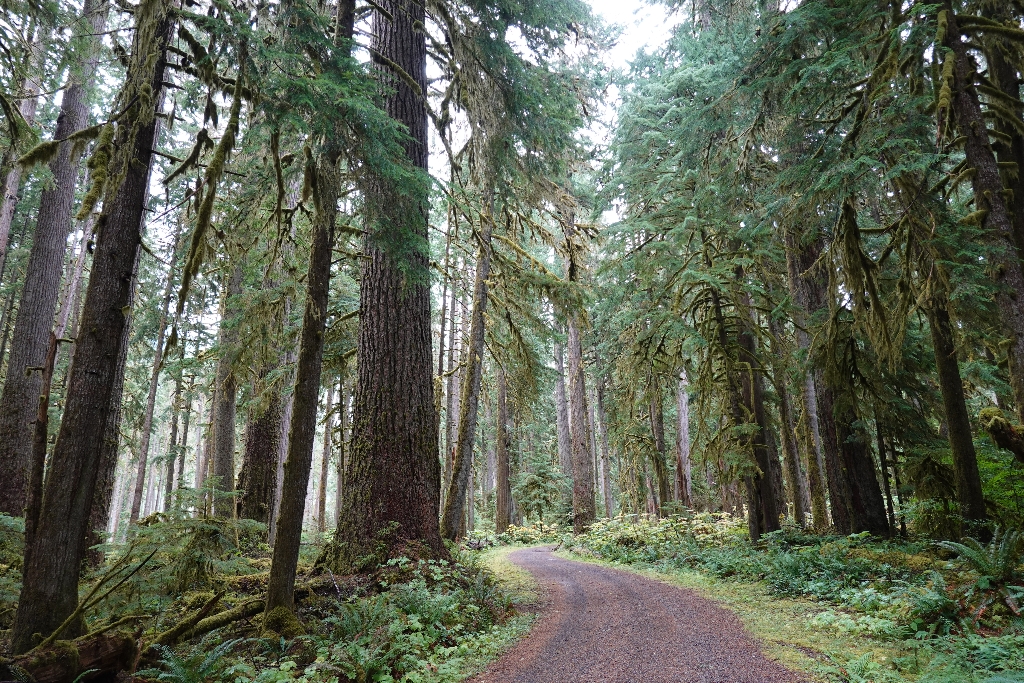
The Carbon River Valley provides the right conditions for a temperate rainforest. Surrounded by mountains high enough to trap rainfall coming from the Puget Sound and low enough for mild temperatures, it receives about 70 to 90 inches of rain per year. Most of the rain falls in one long wet season during winter and spring. Summers are fairly dry, with fog providing most of the moisture.
During the long rainy season, water falls on the tree canopy, trickles to the understory, and seeps into the ground. It then fills rivers, which return water to the ocean. Some of the moisture received by the temperate rainforests is returned to the atmosphere through evaporation. Moist air rises, forms clouds, and falls again as rain in an ongoing process. Big rainforest trees can store a large amount of water, which helps them get through the dry summer season. A single Douglas-fir, like this one on the left side of the Carbon River Trail, can hold as much as 5,000 gallons of water!
Douglas-fir (Pseudotsuga menziesii) is a dominate species in Pacific Northwest forests. Mature trees can be as large as 13 ft (4 m) in diameter and reach heights of 300 ft (90 m). Some Douglas-fir in the park are believed to be over 1,000 years old. The bark of older trees becomes very thick with reddish-brown, deeply-furrowed ridges. Older trees also lose their lower branches, leaving behind straight trunks.
Is there something we missed for this itinerary?
Itineraries across USA


















































